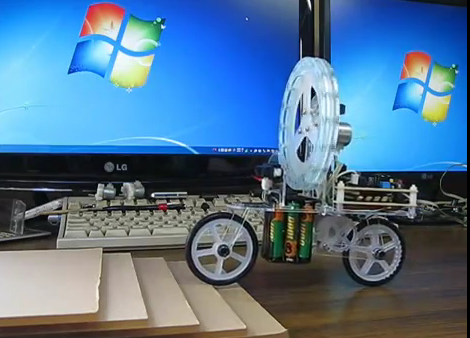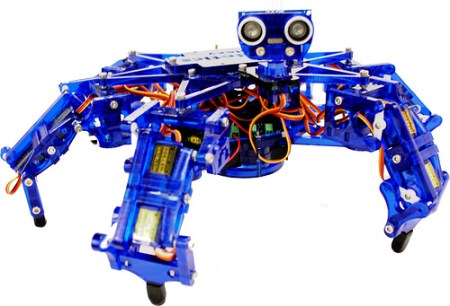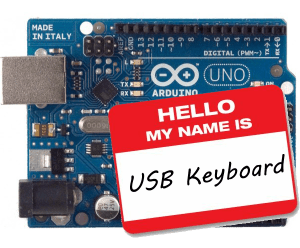
This self balancing robot still uses just two wheels, but it’s balancing very differently than we’re used to seeing. Where most of the projects use a form factor that’s similar to a Segway, this works just like a bicycle. But it doesn’t need to keep the front and rear wheels spinning to stay upright. In fact, the video after the break shows it balancing perfectly while at a complete standstill. [Aoki2001’s] creation isn’t stuck in one place. He included distance sensors on the front and back which are used to move the bike as if by repulsion.
The large wheel where the rider would be is what makes sure the vehicle doesn’t topple over. It acts as an inverted pendulum, pushing against the large wheel’s inertia by rotating the motor to which it is attached. The same concept was seen back in march on a full-sized bike. But why use two wheels when you only need one? His unicycle version can also be seen embedded after the break.
It’s worth looking at [Aoki’s] other YouTube offerings too. He’s got a small robot which balances on top of a ball. It’s the desk-sized version of this hack.
Continue reading “Self Balancer Does It Differently Than We’re Used To Seeing”
















